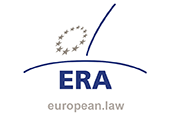
The Project
Within the framework of the Justice Programme the European Union co-financed a series of seven language training activities on cross-border mediation. The main objective was to improve the legal and professional English-language skills of judges, lawyers and mediators in order to facilitate mediation procedures, and to boost mutual trust at EU-wide level.
The seminars were organised by the Academy of European Law (ERA) in partnership with the national judicial training institutions of Bulgaria, Lithuania, Poland, Spain and Portugal, as well as with the support of the Association of European Judges for Mediation (GEMME) and the European Judicial Training Network (EJTN).
The Concept
Each of the seven seminars was autonomous and offered legal and linguistic training on one of the following topics:
- Civil and commercial mediation
- Family mediation
Each seminar had a duration of 3 days (2 full and 2 half days) and was organised in the partnering Member States. The number of participants (judges, lawyers and mediators) was limited to 30 per event.
Training methodology
The training activities combined interactive language training and legal training with a focus on cross-border mediation. The interactive language training was based on two linguistic manuals, which were specially developed by linguistic experts, and focus on reading and listening comprehension, relevant vocabulary as well as interactive group exercises, etc.
The legal training consisted of both legal and mediation training: each seminar had its focus either on civil and commercial mediation or family mediation. One set of comprehensive case studies was developed for each topic by renowned EU law experts and was used in workshops in order for participants to learn about the procedures of cross-border mediation through practical exercises.
Trainers for the seminars included two linguistic experts and three legal experts/mediators with long-standing experience in international cooperation. The participants were divided into two smaller groups in order to ensure closer interaction between the participants and one-to-one contact with the trainers.
